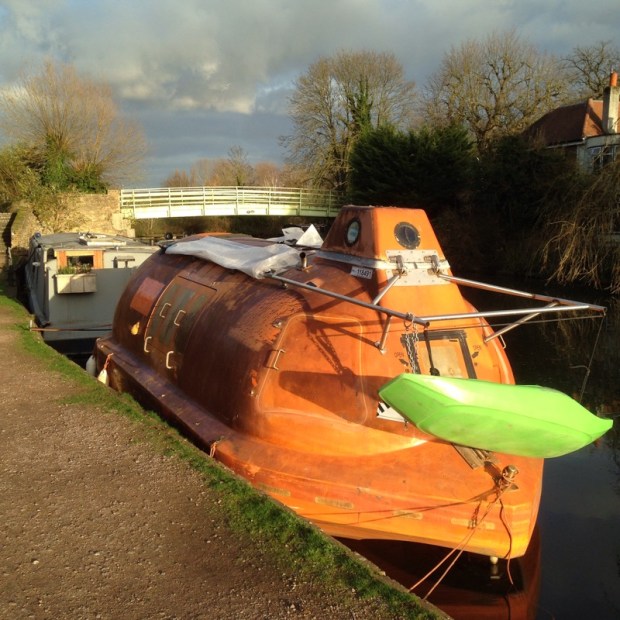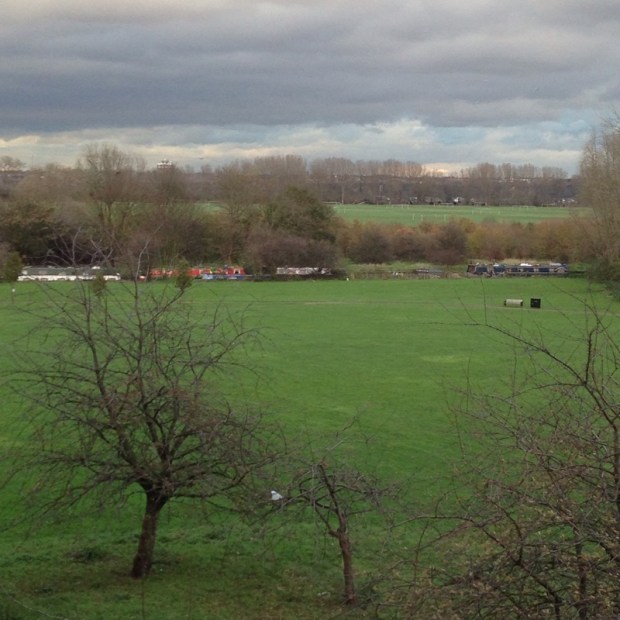A cold clear sky in Hertford as I crossed the frosty park towards the river, the lock, and the beginning of the Lea navigation and the tow paths that would lead me all the way to Hackney. The route would be lined with barges and houseboats of all types offering an alternative way of life to the liveaboards.
The Lee Valley Regional Park starts in Ware and goes to the Thames at East India Docks, 26 miles away. A 10,000acre linear strip of green its Londons lung and contains multiple facilities for outdoor activities.
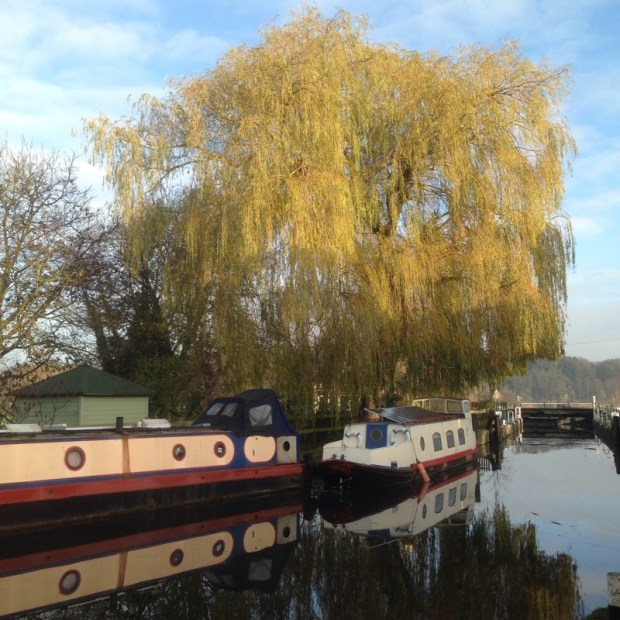 Below the lock the waters crossed the huge expanse of the Kings Meads water meadows and passed the New River take off dug around 1610 to supply as it still does fresh spring drinking water to London.
Below the lock the waters crossed the huge expanse of the Kings Meads water meadows and passed the New River take off dug around 1610 to supply as it still does fresh spring drinking water to London.

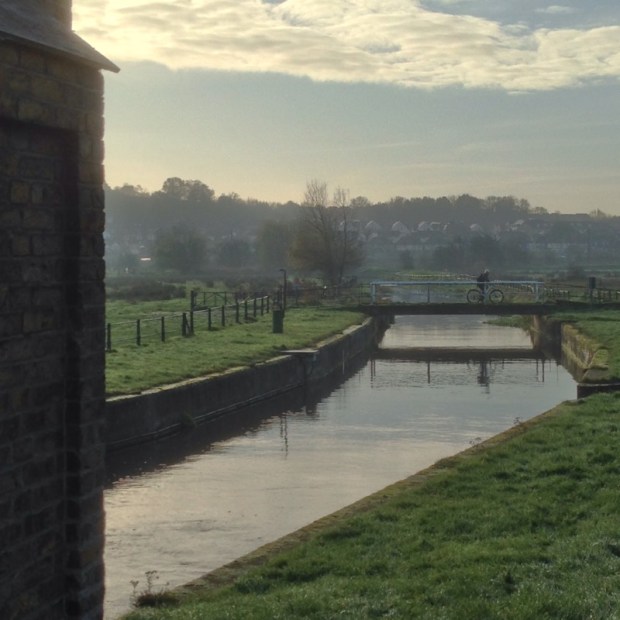 Looming in the far distance was the vast GlaxoSmithKline factory and the wooden footbridge leading to it. A little beyond was a weir where I was sure I could detect a strong aroma of perfumed cleaning product and the water seemed suspiciously sudsy. Surely Glaxo couldn’t or wouldn’t.
Looming in the far distance was the vast GlaxoSmithKline factory and the wooden footbridge leading to it. A little beyond was a weir where I was sure I could detect a strong aroma of perfumed cleaning product and the water seemed suspiciously sudsy. Surely Glaxo couldn’t or wouldn’t.

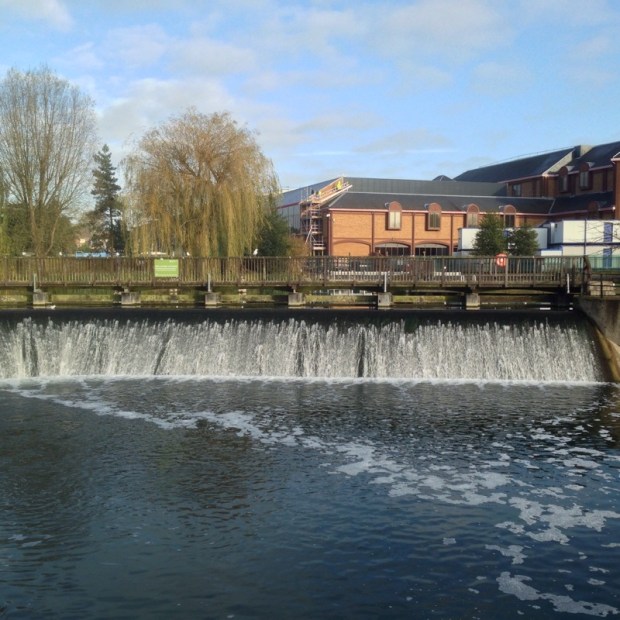 The next town to appear was Ware, with its historical gazebos, originally known as Dutch summer houses after their inspiration. The inn keepers of the 18th century built them as a tranquil space away from the hussle and bustle of the streets.
The next town to appear was Ware, with its historical gazebos, originally known as Dutch summer houses after their inspiration. The inn keepers of the 18th century built them as a tranquil space away from the hussle and bustle of the streets.

 An uninterrupted stretch of tranquil water followed dotted with barges and narrow boats leading towards Rye Meads Nature Reserve and the 17th century Rye House Inn whose landlord touted for tourist business by installing the famous 12 person Great Bed of Ware.
An uninterrupted stretch of tranquil water followed dotted with barges and narrow boats leading towards Rye Meads Nature Reserve and the 17th century Rye House Inn whose landlord touted for tourist business by installing the famous 12 person Great Bed of Ware.


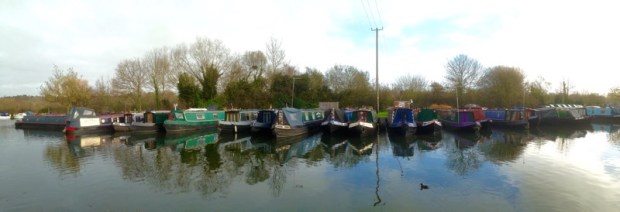
 There was a board explaining the fate of the owner who plotted against King CharlesII
There was a board explaining the fate of the owner who plotted against King CharlesII
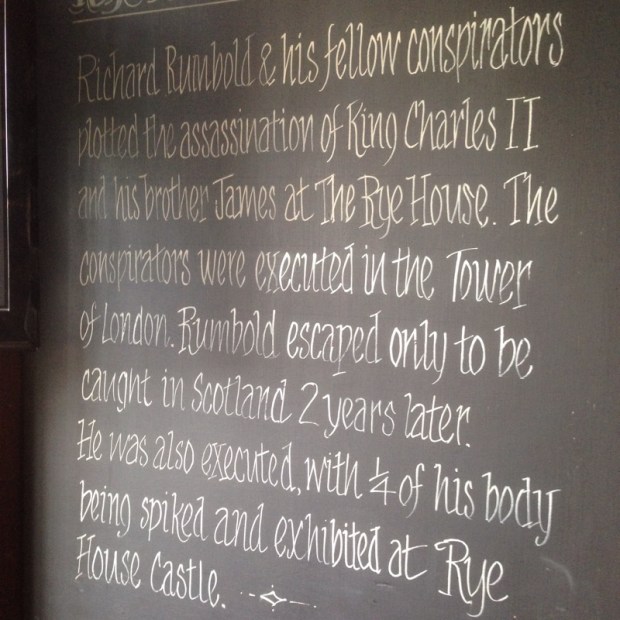 A lot of construction work was going on at the Rye power station , one of three originally coal powered stations whose spent ash filled the extracted gravel pits further downstream.
A lot of construction work was going on at the Rye power station , one of three originally coal powered stations whose spent ash filled the extracted gravel pits further downstream.
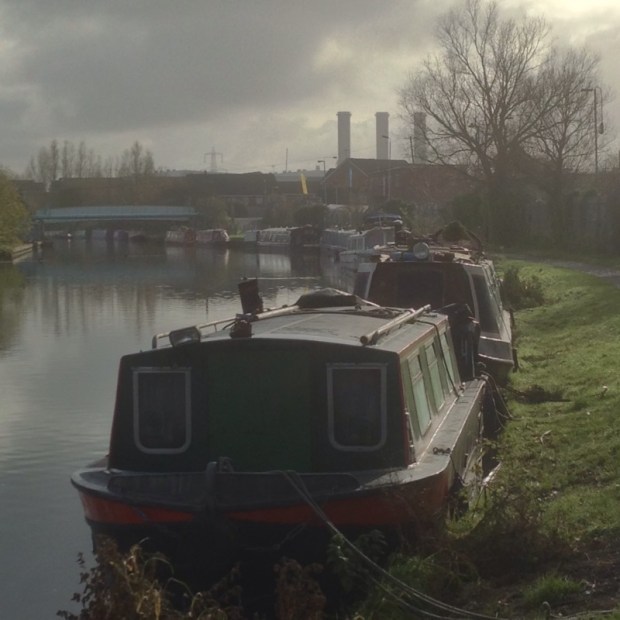
 Another inn with colourful history lay a little further along. The Fish and Eels at Dobb’s Weir was run for a few years by a workhouse chaplain, encouraging temperance rather than abstinence.
Another inn with colourful history lay a little further along. The Fish and Eels at Dobb’s Weir was run for a few years by a workhouse chaplain, encouraging temperance rather than abstinence.
“I shall be the publican behind the bar, the sinners will be in front me, and Christ, I hope, will be in the midst of us”
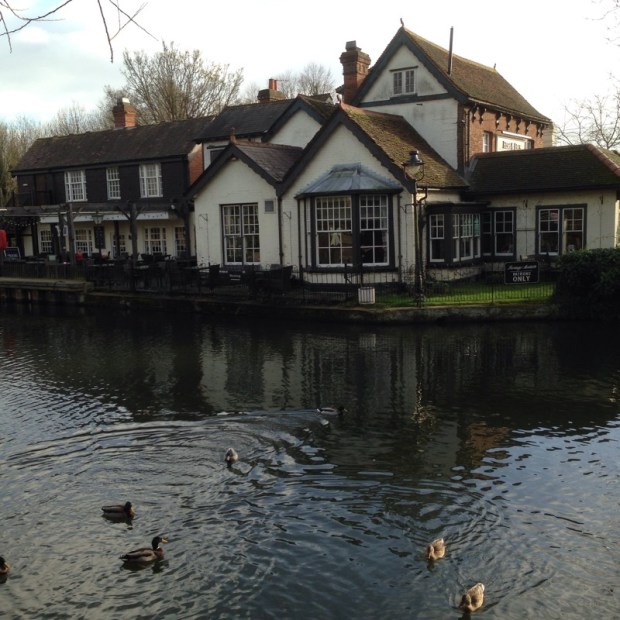 On passed Carthagena lock named for the Admiral Vernon returned from the siege of that Columbian city during the War of Jenkins’ Ear !
On passed Carthagena lock named for the Admiral Vernon returned from the siege of that Columbian city during the War of Jenkins’ Ear !
Passed Broxbourne and the third emergency lifeboat I’d seen and across Nazeing and Holyfield marshes with specially constructed orchid viewing boardwalks.
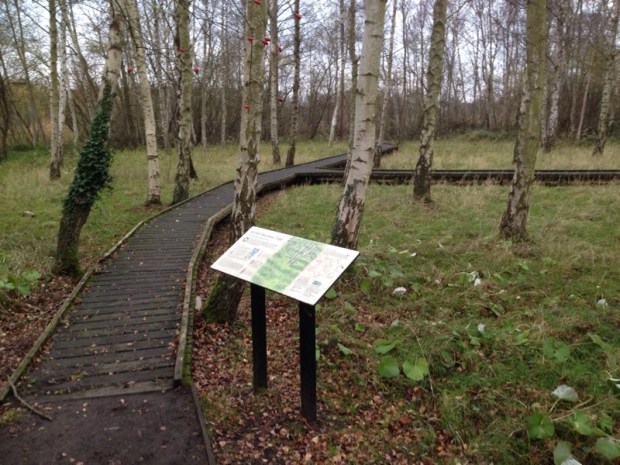 For miles down this marshy stretch there were traveller sites, big and small, rough and smart. It seemed that the unloved pockets of land that for the last couple of days had been given over to sewage works were now being used for caravan living. I couldn’t work out if the sites were privately owned, council or squatted. Maybe all three.
For miles down this marshy stretch there were traveller sites, big and small, rough and smart. It seemed that the unloved pockets of land that for the last couple of days had been given over to sewage works were now being used for caravan living. I couldn’t work out if the sites were privately owned, council or squatted. Maybe all three.
 As I neared my destination I met a couple of magnet fishermen. Opposite an old brick bridge abutment they repeatedly threw in their magnets on lines and very occasionally pulled in some metal junk. They have, in the past, retrieved bags containing money and cocaine. Which, of course, they handed into the police.
As I neared my destination I met a couple of magnet fishermen. Opposite an old brick bridge abutment they repeatedly threw in their magnets on lines and very occasionally pulled in some metal junk. They have, in the past, retrieved bags containing money and cocaine. Which, of course, they handed into the police.
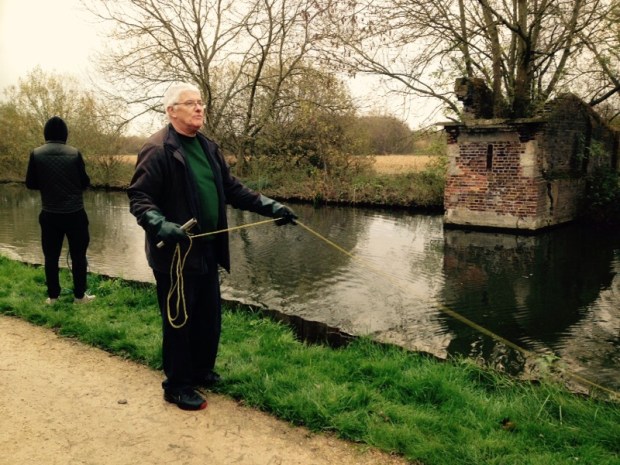 The black timber lodges of the Lee Valley Youth Hostel and the outdoor education center came into view and just past them was Cheshunt train station where Sally was arriving to join me for the final days hike to London.
The black timber lodges of the Lee Valley Youth Hostel and the outdoor education center came into view and just past them was Cheshunt train station where Sally was arriving to join me for the final days hike to London.
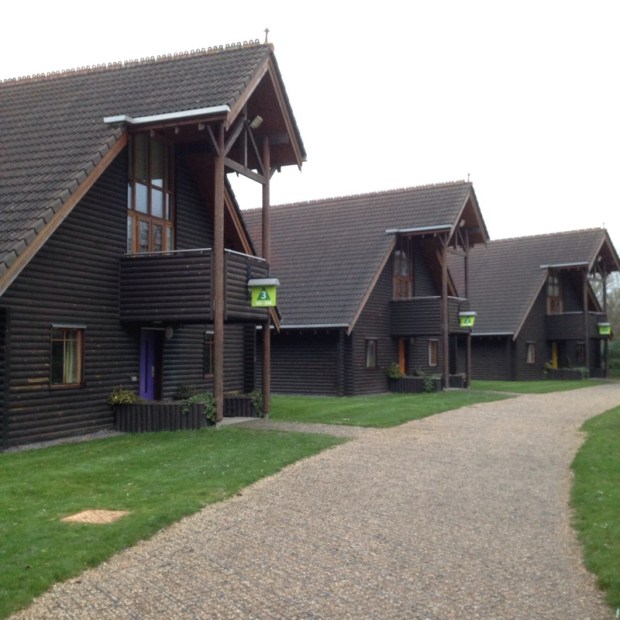 It is a good hostel with restaurant and bar and self catering kitchens in the lodges where we had a double room with en suite for £30. Very different from the YHA experiences of our youth.
It is a good hostel with restaurant and bar and self catering kitchens in the lodges where we had a double room with en suite for £30. Very different from the YHA experiences of our youth.
In the morning we had a look at a load of timber scultures before heading off down the towpath in a light drizzle.
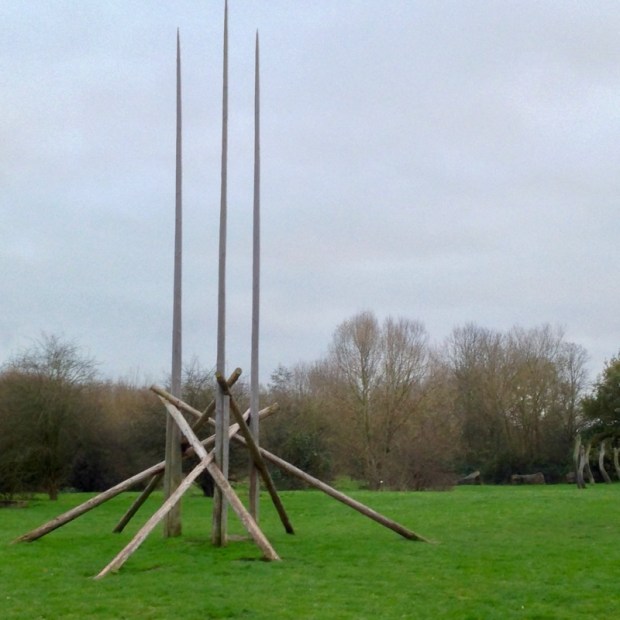 The route became much more urban as we passed some 2nd WW anti aircraft gun platform and into the scuzzy Waltham Abbey area and under the noisy M25.
The route became much more urban as we passed some 2nd WW anti aircraft gun platform and into the scuzzy Waltham Abbey area and under the noisy M25.
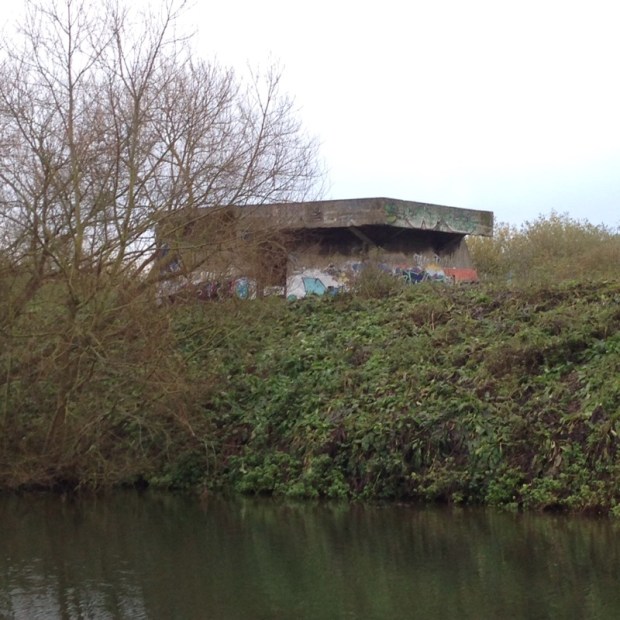
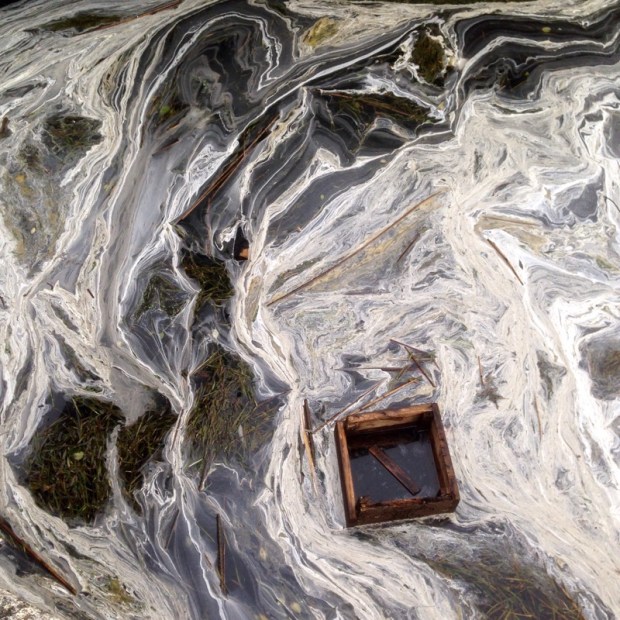

 We passed the old Royal Small Arms factory of Enfield Island with its Goverment Row workers cottages.
We passed the old Royal Small Arms factory of Enfield Island with its Goverment Row workers cottages.

 Enfield dry dock was a hive of industry with boaters doing up their craft of which their were an increasingly bizarre selection along the banks.
Enfield dry dock was a hive of industry with boaters doing up their craft of which their were an increasingly bizarre selection along the banks.
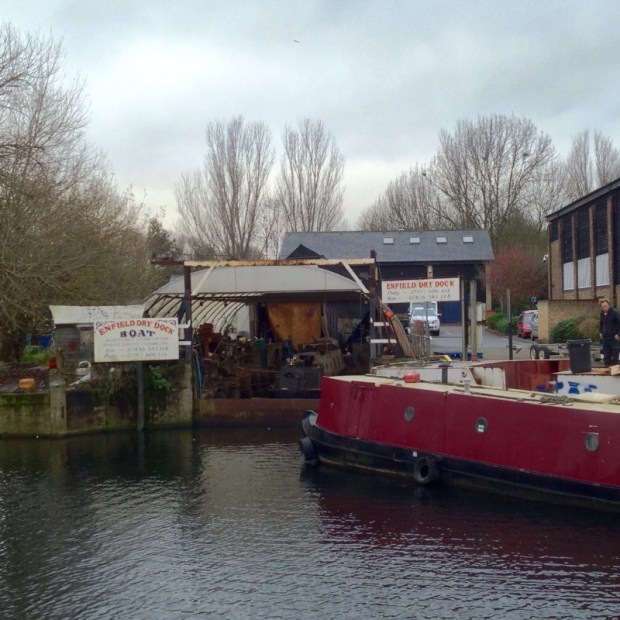
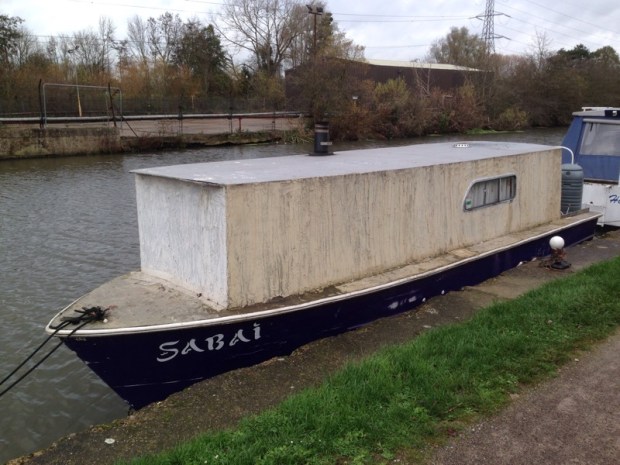
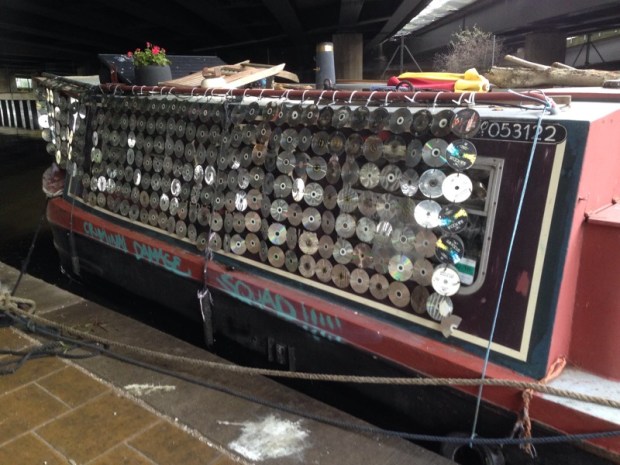
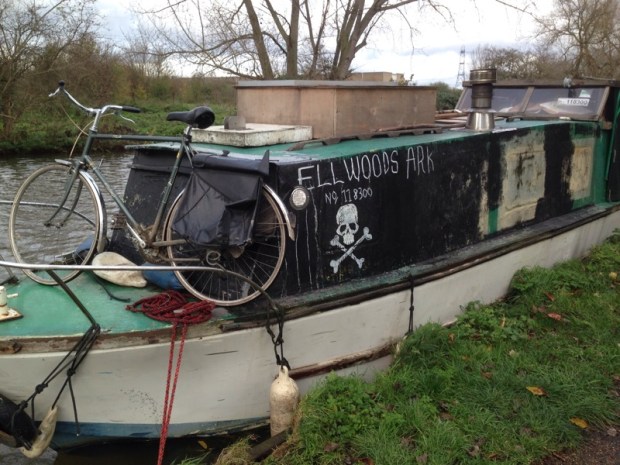 We passed a modern factory building sporting a row of birdboxes ,the four highrise blocks of Ponders End and the chimney of the London Eco waste recyling centre.
We passed a modern factory building sporting a row of birdboxes ,the four highrise blocks of Ponders End and the chimney of the London Eco waste recyling centre.
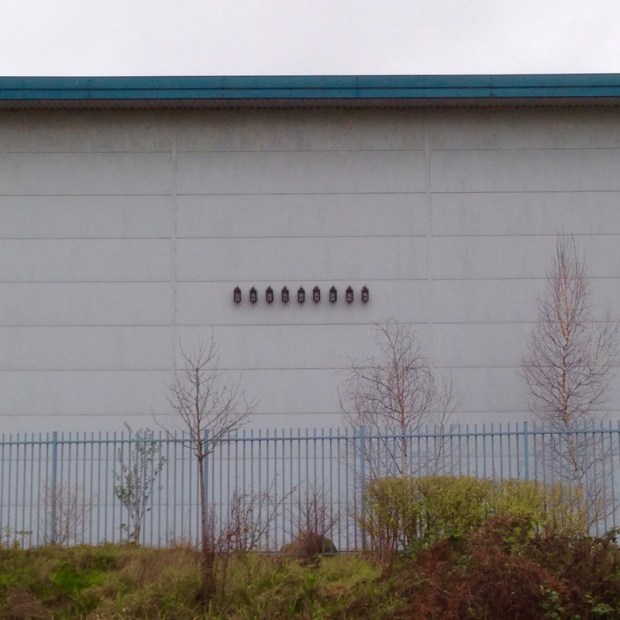


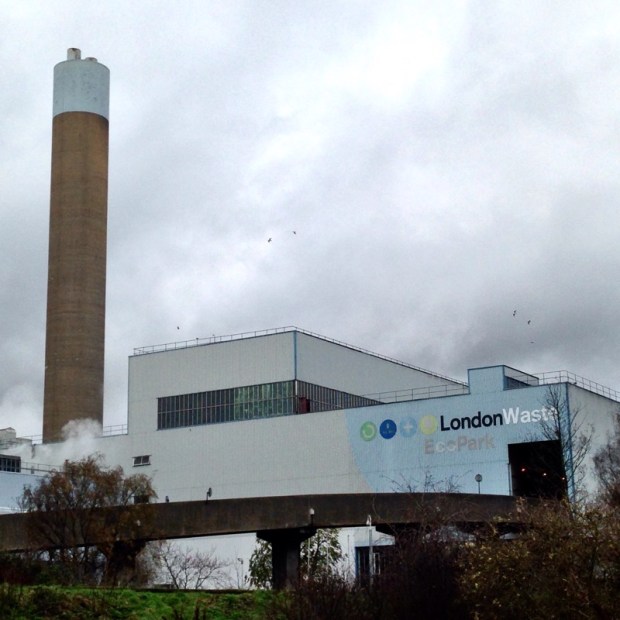 Nearby in scrubby woodland between the river and a reservoir we spotted a sad looking set up of tarps and tents housing who knows who.
Nearby in scrubby woodland between the river and a reservoir we spotted a sad looking set up of tarps and tents housing who knows who.
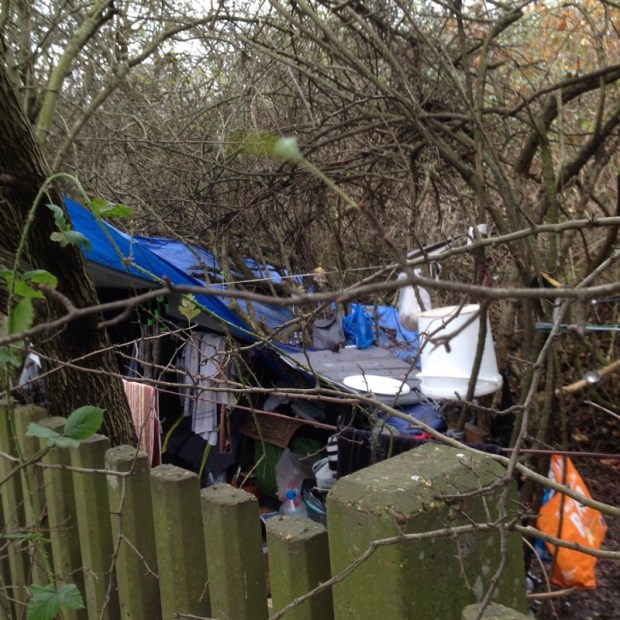 We stopped at the tiny Leaside Cafe on an industrial estate on the edge of Tottenham Marshes and as the sun started to emerge carried on towards Clendish Marsh and Walthamstow Wetlands, Europes largest urban wetland reserve. As we neared the heart of the city there were more and more people choosing to avoid the extreme property prices by living aboard, on some pretty small homemade jobs as well as luxurious floating studio apartments .
We stopped at the tiny Leaside Cafe on an industrial estate on the edge of Tottenham Marshes and as the sun started to emerge carried on towards Clendish Marsh and Walthamstow Wetlands, Europes largest urban wetland reserve. As we neared the heart of the city there were more and more people choosing to avoid the extreme property prices by living aboard, on some pretty small homemade jobs as well as luxurious floating studio apartments .
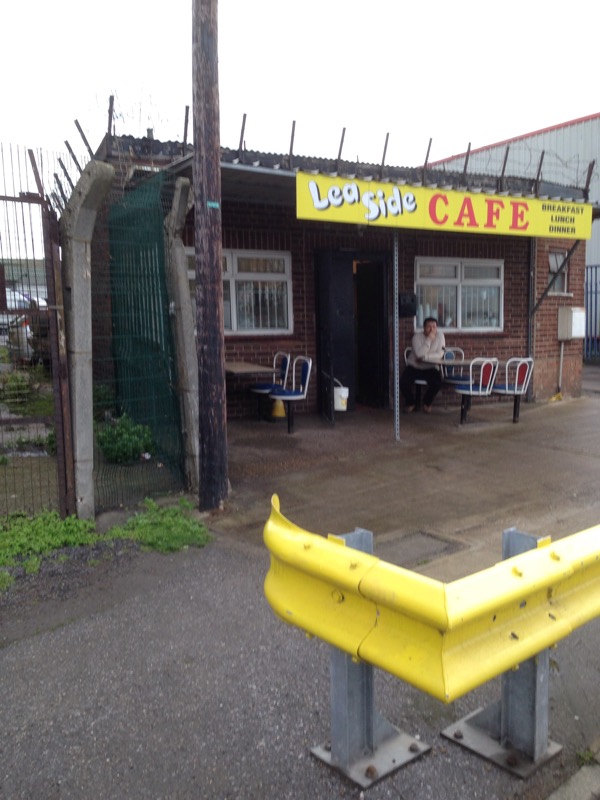
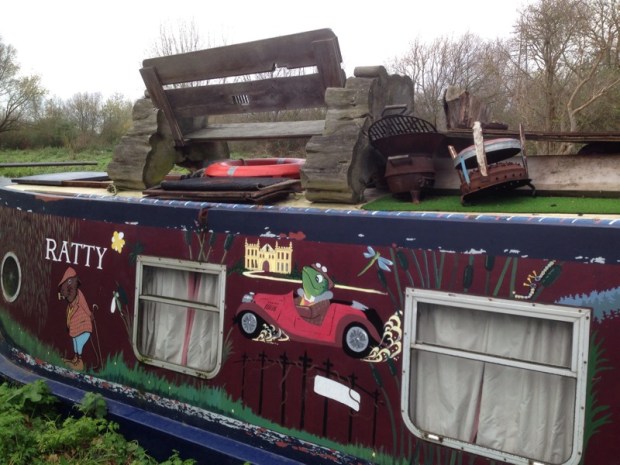

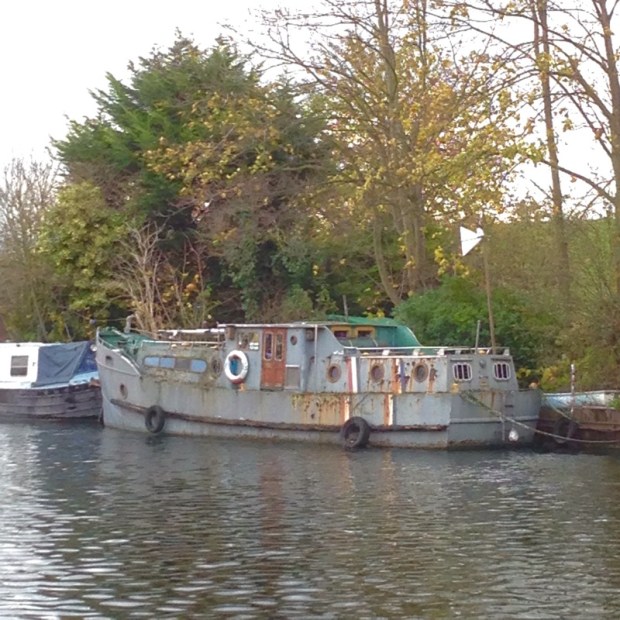

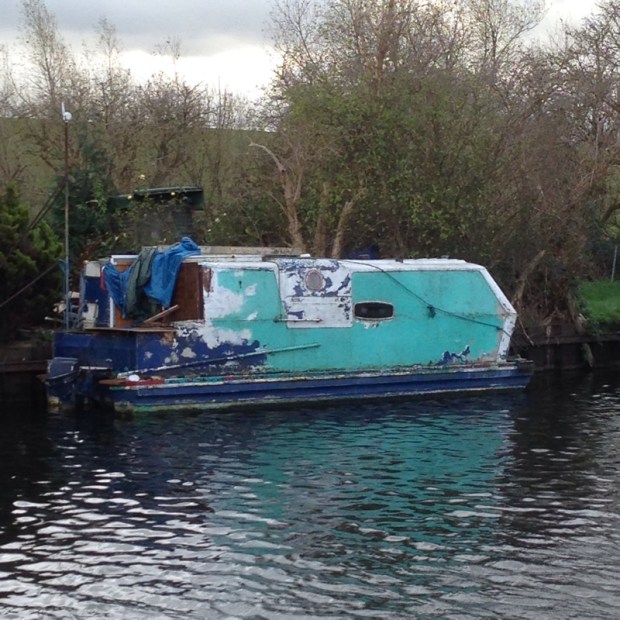
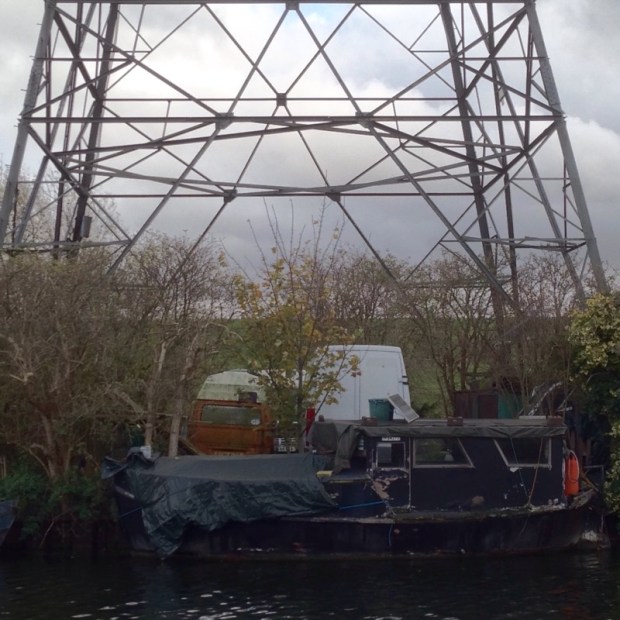

 There were cranes at Spring Hill where there had been a big timber yard and another boat yard and marina. The houseboat lined towpath was wide and grassy through Walthamstow Marshes with it’s Galloway Belted cattle put there to encourage grass growth and retrict the spread of reed and weeds.
There were cranes at Spring Hill where there had been a big timber yard and another boat yard and marina. The houseboat lined towpath was wide and grassy through Walthamstow Marshes with it’s Galloway Belted cattle put there to encourage grass growth and retrict the spread of reed and weeds.
At this stage we had passed Tottenham Hale and were into the new development around Middlesex Wharf.
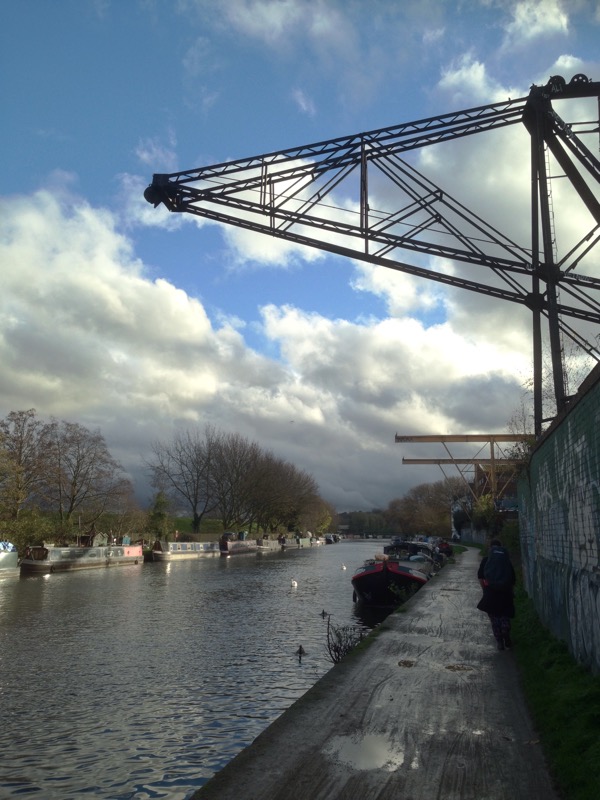
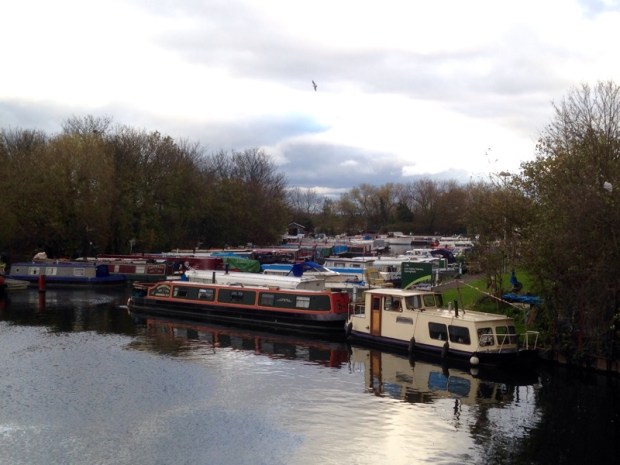
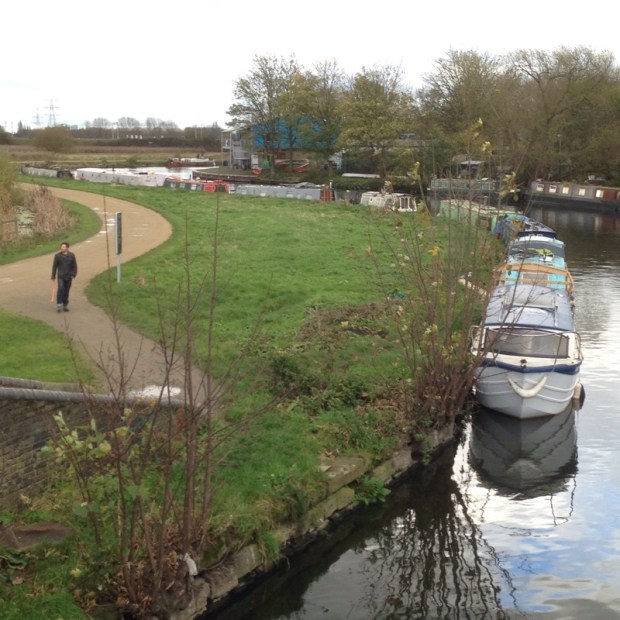

 Suddenly as we followed the towpath down the Hackney Cut past the Middlesex Fillter Beds our final destination came into view, the ex council tower block of Landmark Heights, and before long we were looking back at the Lee from the flat’s balcony.
Suddenly as we followed the towpath down the Hackney Cut past the Middlesex Fillter Beds our final destination came into view, the ex council tower block of Landmark Heights, and before long we were looking back at the Lee from the flat’s balcony.
A great way to arrive into central London after 80 km of near traffic free hiking.
